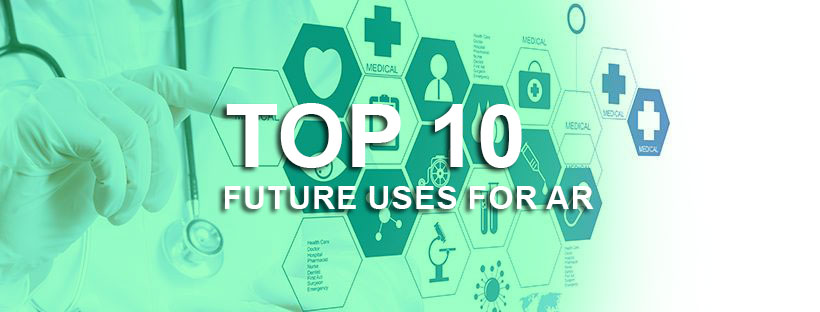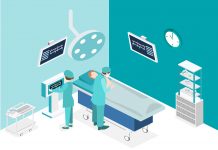1. Telemedicine
Doctors holding medical consults by telephone can be difficult, complicated, uncomfortable, and even sometimes ethically dubious. Augmented Reality could facilitate medical consultations without endangering patients’ privacy by allowing specialists to perform virtual hands-on demonstrations from afar. This saves time and effort, which benefits both patient AND physician.
2. Clinical Physicians and Diagnosis
We have seen a lot of applications for Augmented Reality in surgery, but how could it benefit clinical medicine? Internal Medicine, Dermatology, Pneumology, and other clinical specialties could be seeing some innovations in the near future, we hope… we even have some ideas of our own.
3. Augmented Vision
Vision impairments are incredibly common, ranging from minor to severe, and the reports of these conditions are only increasing as people spend more and more time staring at screens. Augmented Reality and wearable AR devices could innovate the field of ophthalmology, from self-correcting glasses to color-perception related illnesses solutions. The possibilities are limitless!
4. Real-Time Imagenology
Of course, the idea of DICOM 3D builds on AR devices are nothing new, but there is a lot of room for improvement in this department. We think that an interactive model of scan results could allow for surgeons and physicians to gain a more comprehensive understanding of a patient’s body, and make more informed decisions based upon that. Ultrasound helps, but we think that more can be done, and that AR could be the technology to open the door into new worlds of patient care.
5. Emergency Medicine
Rescue operations and emergency medicine could reap a substantial benefit from AR and wearable devices. There have been preliminary studies done in Italy about this very possibility, but we would love to see EMT personnel linked through an AR network, sharing vital information and keeping the public and other emergency personnel safer in disasters.
6. Med School: Expanding the Horizons
There’s been a lot of talk about AR being a great tool for teaching anatomy classes, but what about other medical subjects? What if we could see the metabolic pathway of a drug through the body, or watch as a bone moves in its socket?
Our friends at INVivo Communications have shown us how easy and engaging a full class taught with AR could be, and we are would love to see professors and instructors branch out and be creative with these tools!
7. Telesurgery
Surgical broadcasting has already allowed specialists from around the world to share their techniques and tips with others. However, AR could take that one step further: allowing surgeons to perform a procedure through robotic surgery and AR from afar. While there is still a long road ahead for AR before this becomes a reality, we think it’s one of the most exciting potentials we know of.
8. Plastic Surgery
When people see a plastic surgeon for a reconstructive or a cosmetic procedure, they are always curious to know what the final product might look like. However, there’s something very impersonal about a photographic demonstration–what if we could transform this practice with AR? A patient could put on an AR device look at themselves with surgical changes superimposed over the real image. It could increase satisfaction rates in cosmetic procedures, and ease the transition in reconstructive cases.
9. Medical Procedures… for Patients
Unfortunately, many patients can understand a procedure while they’re sitting with a clinician, but once they get home, they find it difficult to recreate. AR could help with that! For example: a new AR app that could provide breastfeeding tips to new mothers. There are many problems that could be addressed by having an AR tutor in a patient’s home. First aid, changing a colostomy bag, correct emptying and installation of an urine drainage bag, and many other procedures could be facilitated by this technology!
10. Physiotherapy Unit at home
Many patients require regular physiotherapy to recover from injuries or relieve chronic pain. However, physical therapy appointments can be expensive, and many people do not have the time to take off work one or more times a week to visit their physiotherapist during office hours. AR is the perfect solution! An instructional and assessment unit could be installed in-home for patients who need regular appointments but cannot attend them in an office. Improving the lives of all patients is the entire goal of medicine, after all, and expanding the advancements of medicine outside of the clinician’s office is a great place to start!








